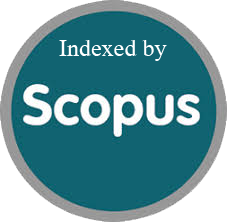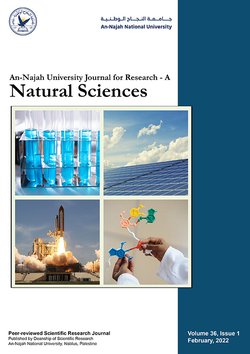Effect of Growth Medium and Foliar Application with Normal and Nano Microelements on the Qualitative Traits of Strawberry Cv. Festival
Authors:
Article info
2025-03-17
2025-07-26
2025-07-29
None - None
Keywords
- normal micronutrients
- Growth medium
- foliar spraying
- strawberry
- qualitative traits
- nanoparticles micronutrients
Abstract
During the 2019–2020 and 2020–2021 seasons, the study was carried out in the greenhouse of the Department of Horticulture and Landscape Engineering, College of Agriculture, University of Anbar. In a protected environment, the objective was to examine the effects of growing medium type and foliar application of normal and nano zinc and iron on the qualitative traits of strawberry plants (cv. "Festival"). M1 (river soil + peat moss at a 3:1 ratio), M2 (river soil + 50% Ceratophyllum demersum + 50% alfalfa at a 3:1 ratio), and M3 (river soil + poultry manure at a 3:1 ratio) were the growing media utilized. Among the normal and nano micronutrient treatments were S0 (spraying with distilled water only, which was the control treatment), S1 (normal zinc at 50 mg L⁻¹), S2 (nano zinc at 10 mg L⁻¹), S3 (nano zinc at 20 mg L⁻¹), S4 (normal iron at 150 mg L⁻¹), S5 (nano iron at 20 mg L⁻¹), and S6 (nano iron at 40 mg L⁻¹). Every qualitative traits was significantly impacted by the growth media. For the two study seasons, the M3 medium produced the best results for total acidity, total sugars, total sugar/total acidity ratio, anthocyanin pigment, and ascorbic acid content for the two studies seasons. Similarly, the foliar treatment of normal and nano zinc and iron strongly impacted all planting parameters. During the first season, the S4 treatment produced the greatest results for ascorbic acid content, total sugars, total sugar/total acidity ratio, and acidity percentage. In contrast, the S6 treatment yielded the greatest values for total acidity, total sugars, total sugar/total acidity ratio, anthocyanin pigment, and ascorbic acid content. All of the qualities that were investigated were significantly impacted by the interaction between the research factors. Depending on the attribute under study, the interaction treatments M3S5 and M3S6 showed the highest values, while the control treatment (M1S0) had the lowest values for all traits under study.
Effect of Growth Medium and Foliar Application with Normal and Nano Microelements on the Qualitative Traits of Strawberry Cv. Festival
المؤلفون:
معلومات المقال
2025-03-17
2025-07-26
2025-07-29
None - None
الكلمات الإفتتاحية
- normal micronutrients
- Growth medium
- foliar spraying
- strawberry
- qualitative traits
- nanoparticles micronutrients
الملخص
During the 2019–2020 and 2020–2021 seasons, the study was carried out in the greenhouse of the Department of Horticulture and Landscape Engineering, College of Agriculture, University of Anbar. In a protected environment, the objective was to examine the effects of growing medium type and foliar application of normal and nano zinc and iron on the qualitative traits of strawberry plants (cv. "Festival"). M1 (river soil + peat moss at a 3:1 ratio), M2 (river soil + 50% Ceratophyllum demersum + 50% alfalfa at a 3:1 ratio), and M3 (river soil + poultry manure at a 3:1 ratio) were the growing media utilized. Among the normal and nano micronutrient treatments were S0 (spraying with distilled water only, which was the control treatment), S1 (normal zinc at 50 mg L⁻¹), S2 (nano zinc at 10 mg L⁻¹), S3 (nano zinc at 20 mg L⁻¹), S4 (normal iron at 150 mg L⁻¹), S5 (nano iron at 20 mg L⁻¹), and S6 (nano iron at 40 mg L⁻¹). Every qualitative traits was significantly impacted by the growth media. For the two study seasons, the M3 medium produced the best results for total acidity, total sugars, total sugar/total acidity ratio, anthocyanin pigment, and ascorbic acid content for the two studies seasons. Similarly, the foliar treatment of normal and nano zinc and iron strongly impacted all planting parameters. During the first season, the S4 treatment produced the greatest results for ascorbic acid content, total sugars, total sugar/total acidity ratio, and acidity percentage. In contrast, the S6 treatment yielded the greatest values for total acidity, total sugars, total sugar/total acidity ratio, anthocyanin pigment, and ascorbic acid content. All of the qualities that were investigated were significantly impacted by the interaction between the research factors. Depending on the attribute under study, the interaction treatments M3S5 and M3S6 showed the highest values, while the control treatment (M1S0) had the lowest values for all traits under study.
Since 2019
Cite Score (Scopus): 0.8
Time to First Decision: 5 Days
Submission to Acceptance: 90 Days
Acceptance to Publication: 14 Days
Acceptance Rate: 22%
Call for Papers:
Sustainable Materials and Chemistry for Energy and Environmental Applications
Why should you
Publish With Us?
An-Najah National University
Nablus, Palestine
Nablus, Palestine
- P.O. Box
- 7, 707
- Fax
- (970)(9)2345982
- Tel.
- (970)(9)2345560
- (970)(9)2345113/5/6/7-Ext. 2628
- [email protected]
- EIC
- Prof. Waleed Sweileh
An-Najah University Journal for Research - A (Natural Sciences) by An-Najah University, Nablus, Palestine is licensed under CC BY-NC 4.0

